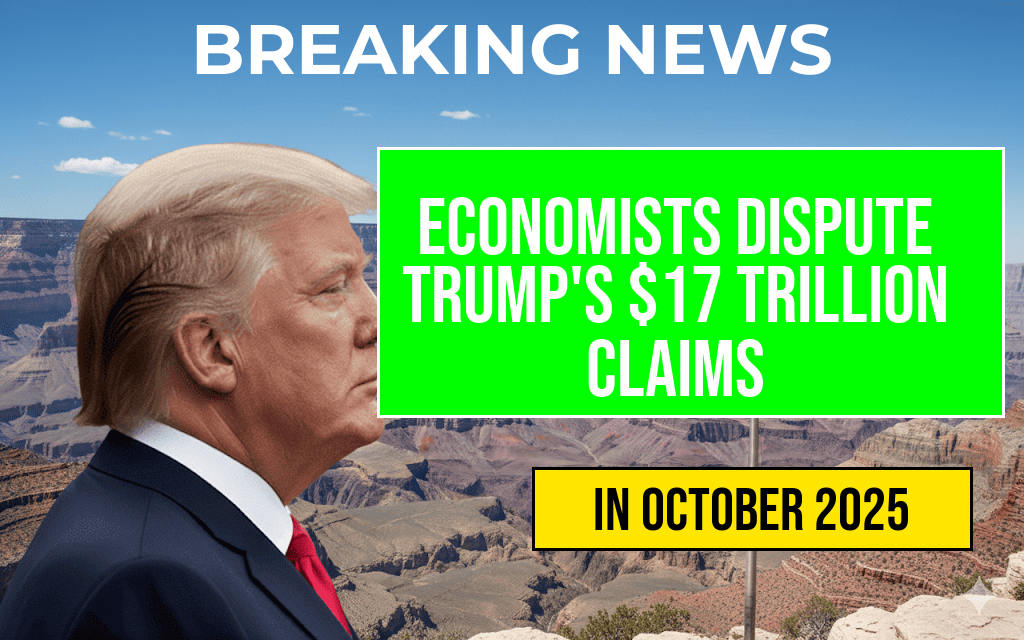Debate has erupted among economists following former President Donald Trump’s recent claims that his administration facilitated $17 trillion in global investment during his tenure. As Trump gears up for the 2024 presidential campaign, assertions regarding economic achievements have reignited discussions about the accuracy of his statements and their implications for future policies. While Trump’s supporters hail these figures as evidence of economic prowess, critics argue that they are misleading and lack substantial backing. This clash has prompted a closer examination of the data and methodologies used to assess foreign direct investment (FDI) and its actual impact on the U.S. economy.
Examination of Trump’s Claims
During a campaign rally, Trump stated that his administration had successfully attracted $17 trillion in global investments, which he claims stimulated job creation and economic growth. These assertions are based on a combination of foreign investments made during his presidency and projections about future investments spurred by his policies. However, economists are divided on the interpretation of these numbers.
Support for Trump’s Figures
- Foreign Direct Investment Growth: Proponents of Trump’s claims point to a notable increase in foreign direct investment during his presidency. According to data from the U.S. Department of Commerce, FDI inflows peaked in 2018, reaching approximately $346 billion.
- Tax Cuts and Job Acts: Supporters argue that the 2017 Tax Cuts and Jobs Act, which lowered the corporate tax rate, incentivized foreign companies to invest in the U.S. economy. This, they claim, contributed to increased investment figures.
Criticism of the Claims
- Lack of Context: Critics assert that while investment figures may have risen, they need to be contextualized within the broader economic landscape. For example, investment flows can be volatile and influenced by numerous factors, including global economic conditions, other countries’ policies, and market trends.
- Misleading Projections: Detractors from Trump’s camp also argue that projecting future investments as a completed achievement distorts reality. Many investments take years to materialize and may not directly correlate with the administration’s policies.
Analyzing Economic Impact
The controversy surrounding Trump’s claims raises important questions about the actual impact of foreign investment on job creation and economic growth. While increased FDI can lead to new jobs and infrastructure development, the effects can vary significantly based on industry sectors and regional factors.
Job Creation vs. Investment Figures
Economists emphasize that job creation is not solely dependent on foreign investments. Domestic factors such as workforce skills, infrastructure, and market demand also play critical roles. A comprehensive analysis of the job market during Trump’s presidency reveals mixed results, with unemployment rates falling to historically low levels but also facing challenges in wage growth and job quality.
Conclusion of Economic Debate
As the 2024 election season approaches, the debate over Trump’s investment claims is likely to intensify. Economists from various backgrounds will continue to scrutinize the data and its implications for future economic policies. The discussion highlights the importance of transparency and accuracy in economic reporting, especially in the politically charged atmosphere surrounding presidential campaigns.
References and Further Reading
- Forbes: Economists Clash Over Trump’s $17 Trillion Global Investment Claims
- Brookings Institution: The Future of Foreign Direct Investment in the United States
- Investopedia: Foreign Direct Investment (FDI)
Frequently Asked Questions
What is the main claim made by Trump regarding global investments?
Trump claims that his administration will generate $17 trillion in global investments through economic policies and initiatives aimed at stimulating the economy.
Why are economists divided over Trump’s investment claims?
Economists are divided because while some believe that Trump’s policies could indeed lead to significant economic growth, others argue that the figures are overly optimistic and not based on realistic assessments of the current economic landscape.
What factors are influencing the debate about the $17 trillion investment?
The debate is influenced by various factors, including economic data, historical performance of similar policies, and differing interpretations of global market trends.
What are the potential benefits of Trump’s claimed investments?
If realized, Trump’s claimed global investments could lead to job creation, infrastructure development, and enhanced international trade, potentially boosting the economy significantly.
What concerns do critics have regarding these investment projections?
Critics are concerned that the projections may be unrealistic and could lead to disillusionment if the anticipated economic growth does not materialize, ultimately affecting public trust in economic policies.

Leave a Reply